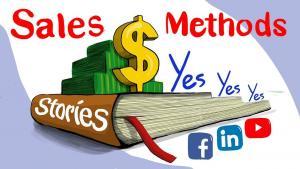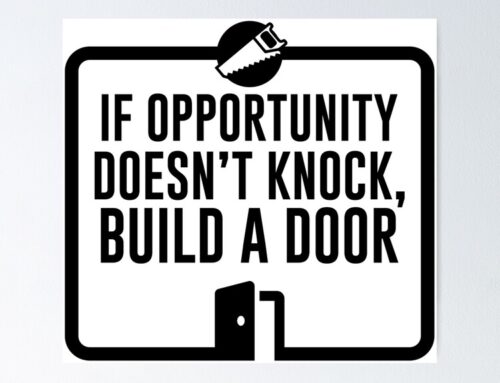- SPIN Selling
- N.E.A.T. Selling
- Conceptual Selling
- SNAP Selling
- The Challenger Sale
- The Sandler System
- CustomerCentric Selling
- MEDDIC
- Solution Selling
- Inbound Selling
There’s always a method to the madness — and having a well-developed sales method ensures you and your sales team hit your goals every month.
Every organization must develop its own unique sales process based on its market, vertical, products, and industry position. What works for one company will totally flop for another.
But which method should you choose? Let’s explore some popular sales methodologies and see if they’ll work for you.
What Is a Sales Methodology?
A sales methodology is the “how” of selling. It takes goals and turns them into actionable steps, like “Ask your prospect this question at that stage.”
Unlike a sales process, a selling methodology usually doesn’t apply to the entire sales cycle.
Instead, it’s relevant to one specific part — qualification, discovery, demo, and so on.
That’s not the only difference between sales processes and selling methodologies. Every organization must develop its own unique sales process based on its market, vertical, products, and industry position. What works for one company will totally flop for another.
All different types of teams, on the other hand, can implement the same selling methodology.
Take “The Challenger Sale” way of selling (number 4 on this list). Whether you offer ERP implementation services to enterprises or cooking supplies to restaurants, your reps can earn their prospects’ trust by offering surprising insights and helping them navigate the buying process.
If you’re confused about which (or how many) to ascribe to, we’ve summarized 10 popular methodologies below.
1. SPIN Selling
Neil Rackham popularized the SPIN sell in his book, “SPIN Selling.”
What does SPIN stand for?
SPIN is an acronym for the four types of questions salespeople should ask their clients: Situation, Problem, Implication, and Need-Payoff. These questions identify buyer pain points and challenges and build rapport between buyer and seller.
- Situation questions aim to understand a prospect’s current situation (although reps should still do research before a call or meeting).
- Problem questions get to the heart of the prospect’s issue.
- Implication questions probe the prospect to think about the consequences of not solving the problem.
- Need-payoff questions prompt the prospect to consider how the situation would change if their problem was solved.
Here’s an example of the SPIN sell in the context of an executive recruitment services firm.
- “How does your current hiring process work?“
- “Do you find that you have trouble filling your senior leadership positions with quality candidates?“
- “If a leadership position goes unfilled, how does that affect the organization?“
- “If you were able to get a list of quality executive candidates, how would that help the HR department and the entire organization?“
Rather than telling prospects why purchasing a product or service is a good idea and what the impact would be, the goal of the SPIN sell is to guide prospects to these realizations on their own.
2. N.E.A.T. Selling™
This qualification framework, developed by The Harris Consulting Group and Sales Hacker, was designed to replace standbys like BANT (Budget, Authority, Need, and Timeline) and ANUM (Authority, Need, Urgency, and Money).
The ‘N’ in N.E.A.T. stands for core needs. Rather than focusing on surface-level pain, the creators urge salespeople to delve deeply into their prospect’s challenges. How will this product matter to them as an individual and the organization?
‘E’ represents economic impact. Don’t simply present your solution’s ROI — help the buyer understand the economic impact they’re currently on track to realize versus the impact they’ll see if they make a change.
‘A’ is access to authority. You probably won’t get to speak with the CFO, but can your champion speak to the CFO on your behalf? Just as importantly, will she?
‘T’, or Timeline, refers to the compelling event forcing your prospect to make a decision. If there aren’t negative consequences to missing this date, it’s not a true deadline.
3. Conceptual Selling
Conceptual selling is founded on the idea customers don’t buy a product or a service — they buy their concept of a solution that the offering represents. With that in mind, founders Robert Miller and Stephen Heiman urge salespeople not to lead with a pitch, but instead seek to uncover the prospect’s concept of their product and understand their decision process.
The authors encourage salespeople to ask smart questions that fall into five categories:
- Confirmation questions reaffirm information.
- New information questions clarify the prospect’s concept of the product or service and explore what they’d like to achieve.
- Attitude questions seek to understand a prospect on a personal level, and discover their connection to the project.
- Commitment questions inquire after a prospect’s investment in the project.
- Basic issue questions raise potential problems.
This sales methodology places a heavy emphasis on listening, and divides the sales process into three stages: Getting information, giving information, and getting commitment.
All transactions should be win-win for both the prospect and the salesperson; if the salesperson feels this is not the case, they should walk away from the deal.
4. SNAP Selling
SNAP selling is a sales methodology that aims to bring salespeople to the prospect’s level. SNAP is an acronym that encompasses four directives for sellers: Keep it Simple, be iNvaluable, always Align, and raise Priorities. With these principles in mind, salespeople can more effectively reach busy prospects with valuable knowledge, connect what they’re selling with what’s most important to the potential client, and make it easy for them to buy.
And while most salespeople only think there’s one decision involved in a deal — whether the prospect buys or not — author Jill Konrath actually identifies three critical decisions. First is allowing access, second is the choice to move away from the status quo, and the third is changing resources. With these mini decision milestones in mind, salespeople can more effectively keep deals on track.
5. Challenger Sale
Co-authors Matthew Dixon and Brent Adamson started “The Challenger Sale” by asserting that practically every B2B salesperson fits into one of five personas: Relationship builders, hard workers, lone wolves, reactive problem solvers, and challengers. According to Dixon and Adamson’s research, salespeople are almost evenly distributed among these profiles. However, the most successful by far were the challengers — this one group represented 40% of the top-performing reps in the authors’ study.
So what makes challengers so effective at selling? They follow a teach-tailor-take control process. First, they teach their prospects — not about the product or service in question, but about larger business problems, new ideas, and astute insights. Next, they tailor their communications to their prospect. Finally, they take control of the sale by not being afraid to push back on their customer, and focusing more on the end goal rather than being liked. The Challenger sales methodology strives to impart the wisdom of the challenger to the other four types.
6. The Sandler System
The Sandler Selling System flips the script of the traditional sales process to a certain extent. While sales has historically revolved around the idea that potential buyers should be pursued and convinced by sellers, the Sandler methodology states that both parties should be equally invested. Although this doesn’t completely reverse the two roles, it does level the scale.
What is the Sandler Sales Methodology?
The Sandler Sales Methodology treats the salesperson and prospect as equally committed to the sales process — it prioritizes building a mutual trust between the two. Rather than acting as a typical salesperson, the rep acts as an advisor and asks questions to identify challenges in the qualification process.
Objections such as time or budget restraints often derail deals after a considerable amount of work has already been invested by both prospect and salesperson. But Sandler-trained reps strive to raise and assess the majority of obstacles in the qualification process.
If the rep discovers that his offering won’t truly address the potential client’s concerns, he won’t waste time convincing them that it actually does — he’ll simply abandon the process. Rather than the seller convincing the buyer to buy, with the Sandler Selling System, the buyer is almost convincing the seller to sell.
7. CustomerCentric Selling
The CustomerCentric sales methodology seeks to transform salespeople from product pushers to collaborative consultants.
CustomerCentric Sales Methodology
The CustomerCentric sales methodology promotes meaningful conversations with prospects to identify their needs and find solutions that solve their challenges. The salesperson targets key decision makers and asks questions to understand their situation, align with their needs, and offer relevant solutions.
CustomerCentric behavior hinges on eight tenets:
- Converse situationally instead of making presentations
- Ask relevant questions instead of offering opinions
- Focus on the solution instead of the relationship
- Target decision makers instead of users
- Promote product usage to garner interest instead of the product alone
- Strive to be the best seller rather than the busiest
- Close on the buyer’s timeline rather than the seller’s
- Empower buyers to buy instead of convincing them
8. MEDDIC
MEDDIC is a qualification process for complex and enterprise sales.
What does MEDDIC stand for?
- M: Metrics
- E: Economic buyer
- D: Decision criteria
- D: Decision process
- I: Identify pain
- C: Champion
To find the answers, ask yourself and/or your prospect:
- Metrics: What’s the economic impact of the situation?
- Economic buyer: Who controls the appropriate budget?
- Decision criteria: What are the formal evaluation criteria the organization is using to pick a vendor?
- Decision process: How will the organization pick a vendor; i.e. what are the specific stages?
- Identify pain: What is the trigger event and financial consequence of the problem?
- Champion: Who is selling on your behalf?
9. Solution Selling
Rather than selling specific products, solution selling leads with the benefits a custom solution can provide for the prospect. For example, a sales rep for a printing and design company could create a custom package of design services, signage, and business cards to fit the buyer’s needs.
This approach acknowledges buyers today are more informed and allows reps to meet prospects where they are. After all, it’s likely prospects have already researched your products and have a solid understanding of the offerings that might fit their needs.
With solution selling, sales reps identify prospect pain points and offer a customized mix of products to meet their needs.
10. Inbound Selling
Marketing and sales goals have become increasingly intertwined. Potential buyers interact with content the marketing team creates, and often research products on their own before interacting with sales.
The inbound sales methodology allows sales professionals to meet prospects where they are — whether that’s on Twitter or on you product pricing page.
Inbound sales analyzes page views, conversions, and social media interactions to personalize the buying process. As prospect’s make their way through the awareness, consideration, and decision stages of the buyer’s journey, there are four actions that are taken by inbound sales reps:
- Identify – Inbound sales reps prioritize active buyers, rather than passive. Active buyers have visited the company site, started a live chat, filled out a form, or reached out on Twitter.
- Connect – Inbound reps connect by reaching out to prospects with a personalized message through their blog, social media accounts, or in-person events. This personalization is based on the buyer’s role, interests, industry, or connections you have in common.
- Explore – In the exploratory phase, reps focus on rapport building and recap previous prospect conversations. This is when reps dive deeper into prospect’s challenges and goals, introduce products/services that might fit these goals, and create plans that fit buyer timelines and budgets.
- Advise – Finally, reps create and deliver a personalized sales presentation covering what they’ve learned about the prospect’s needs and the value and assistance your product/service can provide.
Every sales transaction should enable a buyer to achieve a goal, solve a problem, or satisfy a need. If the product or service won’t fulfill any of these three ends, the salesperson should walk away from the deal.
ARTICLE BY Emma Brudner – BLOG SPOT

206-391-5682
i2i@i2idirectmarketing.com
www.i2idirectmarketing.com
“…all deliveries GPS tracked…”





